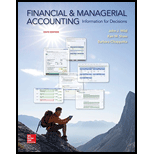
Cost of Goods Sold (COGS):
Cost of goods sold is the total expense or the cost incurred by the business during the process of manufacturing of goods and is directly related to the production. It generally includes the cost of material, labor and other manufacturing support costs.
Cost of Goods
Cost of goods manufacture is the cost related with the goods which were being manufactured within a fiscal year. The following cost covers labor cost, unprocessed material used cost and any other support cost which helped to reshape the unfinished into end goods or materials which have entered the production process thus have consumed of reasonable cost.
Cost of Purchases:
The value given to acquire the inventory for the production process is termed as cost of purchases.
Merchandise Inventory:
Merchandise inventory is the one which is purchased from the manufacturer with the purpose to sell it to the third party. Wholesalers, retailers, or distributors are ones who indulge into purchasing the products at a lower price and selling them at a higher price so to earn profits.
Finished Inventory:
The inventory which has gone through the production process and is all set to get vend or sold is the finished inventory.
To compute: Cost of goods sold for each of the two companies for the year ended December 31, 2015.
Want to see the full answer?
Check out a sample textbook solution
Chapter 14 Solutions
Financial and Managerial Accounting: Information for Decisions
- Please provide the solution to this general accounting question using proper accounting principles.arrow_forwardI need assistance with this general accounting question using appropriate principles.arrow_forwardI need guidance with this general accounting problem using the right accounting principles.arrow_forward
- Stanton Manufacturing applies overhead using a normal costing approach based on machine-hours. The budgeted factory overhead was $298,000, and the budgeted machine-hours were 19,000. The actual factory overhead was $310,250, and the actual machine-hours were 20,400. How much overhead would be applied to production?arrow_forwardPredetermined overhead rate is?arrow_forwardI am looking for the correct answer to this general accounting question with appropriate explanations.arrow_forward
- I am searching for the right answer to this financial accounting question using proper techniques.arrow_forwardPlease provide the solution to this financial accounting question with accurate financial calculations.arrow_forwardPlease provide the accurate answer to this financial accounting problem using appropriate methods.arrow_forward

 AccountingAccountingISBN:9781337272094Author:WARREN, Carl S., Reeve, James M., Duchac, Jonathan E.Publisher:Cengage Learning,
AccountingAccountingISBN:9781337272094Author:WARREN, Carl S., Reeve, James M., Duchac, Jonathan E.Publisher:Cengage Learning, Accounting Information SystemsAccountingISBN:9781337619202Author:Hall, James A.Publisher:Cengage Learning,
Accounting Information SystemsAccountingISBN:9781337619202Author:Hall, James A.Publisher:Cengage Learning, Horngren's Cost Accounting: A Managerial Emphasis...AccountingISBN:9780134475585Author:Srikant M. Datar, Madhav V. RajanPublisher:PEARSON
Horngren's Cost Accounting: A Managerial Emphasis...AccountingISBN:9780134475585Author:Srikant M. Datar, Madhav V. RajanPublisher:PEARSON Intermediate AccountingAccountingISBN:9781259722660Author:J. David Spiceland, Mark W. Nelson, Wayne M ThomasPublisher:McGraw-Hill Education
Intermediate AccountingAccountingISBN:9781259722660Author:J. David Spiceland, Mark W. Nelson, Wayne M ThomasPublisher:McGraw-Hill Education Financial and Managerial AccountingAccountingISBN:9781259726705Author:John J Wild, Ken W. Shaw, Barbara Chiappetta Fundamental Accounting PrinciplesPublisher:McGraw-Hill Education
Financial and Managerial AccountingAccountingISBN:9781259726705Author:John J Wild, Ken W. Shaw, Barbara Chiappetta Fundamental Accounting PrinciplesPublisher:McGraw-Hill Education





